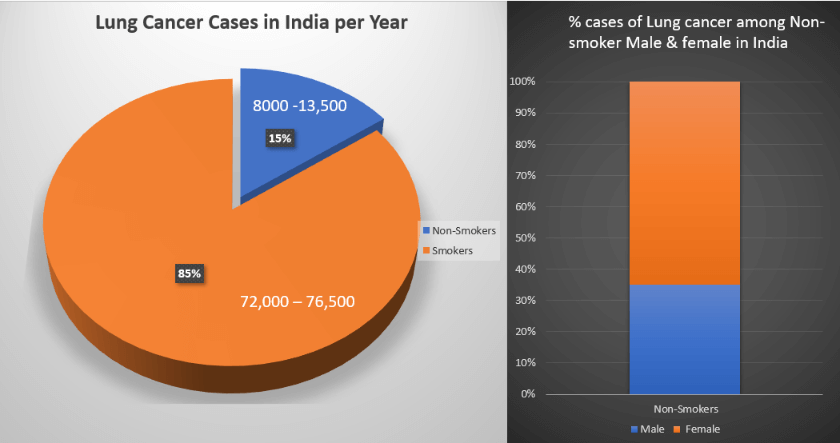Even though smoking is a major risk factor for lung cancer, apart from smoking, Air Pollution, genetic factors, exposure to secondhand smoke, occupational hazards & indoor pollutants like cooking fumes are threats & rising risk of lung cancer among non-smokers.
Updated on 31 Jul 2024, 12:36 PM IST

Statistics: Lung cancer cases in India per year
Lung Cancer
WHO estimates that air pollutants contribute to 100 out of 1000 deaths in lung-cancer globally per year.
Major Risk Factors:
Tobacco Smoking: Burning of Cigarette or other tobacco products liberates carcinogenic substances like benzene, formaldehyde & polycyclic aromatic hydrocarbon, they can cause mutation, DNA damage & chronic Inflammation within the Lungs.
Occupational Hazards: It is the most common causes of lung carcinoma in non-smokers. Persons who exposed to radon, asbestos, silica, diesel exhaust or coal mining are more likely to develop cancer.
Genetic factors: If a person carry mutated TP53, EGFR, & KRAS genes, is more vulnerable to lung carcinoma.
Passive smoking: Peoples who are exposed to second-hand smoke or smoke emitted by a smoker, lit end of a cigarette, cigar, or tobacco burning in hookah, may develop cancer.
Environmental Pollutants: More Concentration of PM2.5 (Group 1 carcinogens), or tiny particulate matter less than 2.5 micrometers in the environment can cause lung cancer and other problems by entering the bloodstream.
Hormonal causes: A non-smoker woman is more susceptible to lung-cancer than a man who do not smoke.
Screening of lung cancer:
A low dose computed tomography (LDCT) of the chest is considered to be a standard screening tool.
Is Nipah Virus spreading? symptoms and treatment


An outstanding blog post